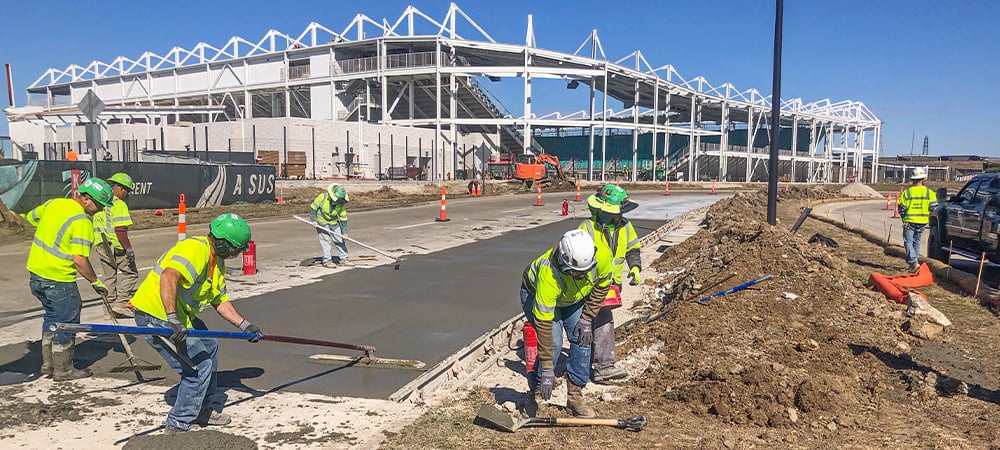Solution
Burns & McDonnell devised a comprehensive transportation management plan to handle the stadium’s traffic efficiently.
To start, the team utilized Vissim modeling software to predict traffic patterns and effectively communicate the magnitude of the challenge to CPKC Stadium. The data fed into the software was a mixture of information from the previous traffic study and extensive knowledge from the team’s experience observing and managing traffic operations for other local professional sports organizations, including the Kansas City Chiefs, Kansas City Royals, Sporting KC and the Kansas Speedway. Based on that experience and knowledge of local driving styles and patterns, the team predicted how long it would take the stadium and parking lot to empty out.
Key strategies near the stadium included traffic flow management by directing passenger vehicles to exit via two local interstates, I-35 and I-29. The team also planned to shut down nearby Berkley Parkway so that it could be reserved for swift access by transit vehicles.
From these plans, the team suggested several infrastructure modifications, which resulted in three relatively minor but operationally significant projects seamlessly executed by Burns & McDonnell using the progressive design-build project delivery method. The modifications included extending the westbound left-turn lane on Berkley Parkway at Lydia Avenue to improve access to parking lots, restriping the northbound I-35 offramp to enhance traffic flow into the main parking areas, and modifying Berkley Parkway to streamline exiting traffic.
To help reduce potential traffic conflicts between fans awaiting Rideshare services and other fans who were leaving by foot or via bicycle, the team geofenced the stadium to restrict vehicle pickups in the immediate facility to reduce congestion at the end of the game. Because pedestrian safety was a key issue, the team also barricaded railroad tracks to discourage hazardous crossings, implemented physical management for pedestrian crossing areas, and incorporated a trail dedicated to cyclists. Continuous collaboration and tweaks to the plans to maintain safety and efficiency after the first game were invaluable for CPKC Stadium’s ongoing needs.

